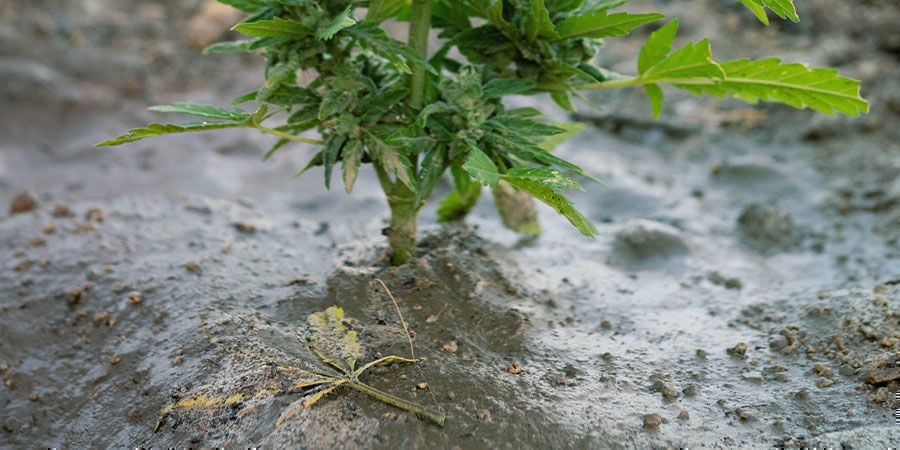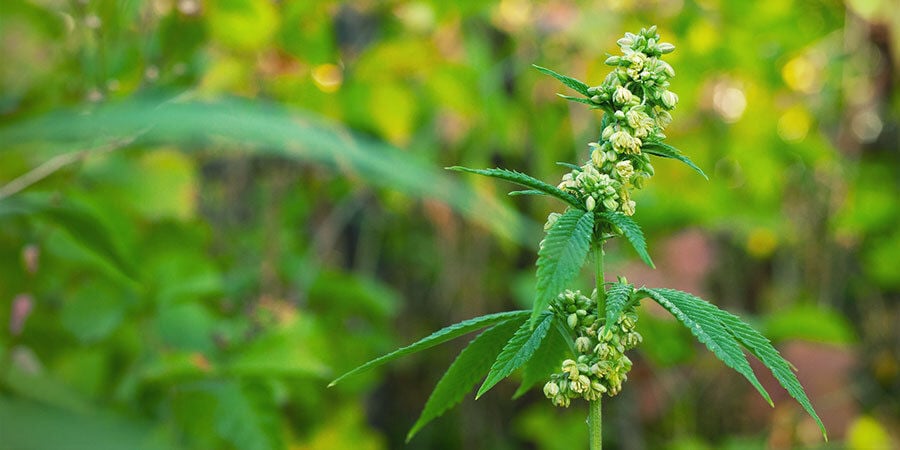
5 Problems That Can Occur During Cannabis Flowering
Getting the very best out of your bud requires care and attention. But then, why else would you be growing? From ensuring adequate nutrient levels and lighting conditions to the best ways to cover up that dank stank, this article covers all you need to know about sorting out your cannabis grow during the all-important flowering stage.
Growing cannabis is not an effortless process. But, it is rewarding, and, if due care is paid, the results are well worth the effort. Each stage of the growing process is a little different, so being diligent throughout the entire cycle is a sure way to get the most and best bud possible from your plant.
Once flowers begin to appear, after months of patient care and waiting, it can be easy to assume that your job is done. Far from it! In many respects, flowering is the most important stage—and the one with the most potential for disaster—so you’ve got to amp up your plant care efforts to secure a successful harvest. You’ve come this far, so don’t get lazy now.
5 Common Mistakes During the Flowering Stage and How To Fix Them
There are some simple but common mistakes that many people, even seasoned growers, can make during the flowering stage. Below are five of the most frequent, along with the solutions to fix them and preventative measures to stop them occurring in the first place.
1. Overdoing Nutrient and pH Levels
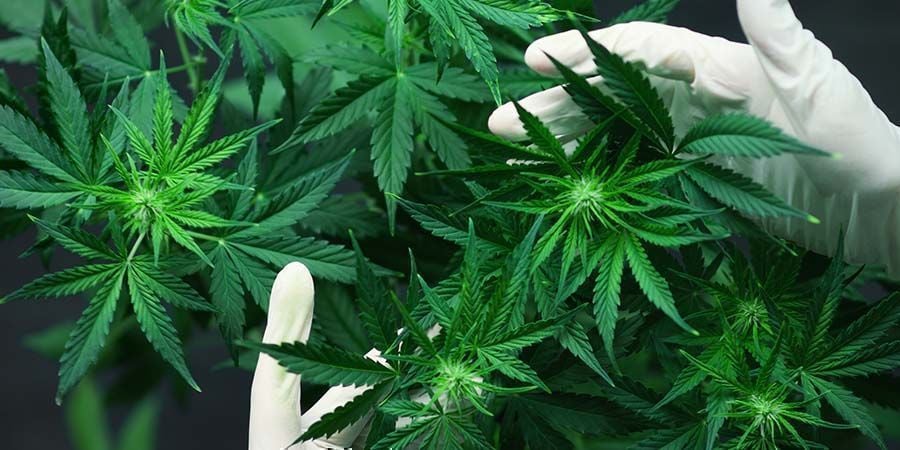
It’s easy to be gung-ho with feeding cannabis plants, but more is not always better. Maintaining the correct nutrient and pH balance in your substrate (most likely soil) is essential to your plant's health, and to ensuring the very best results. Yield, strength, and flavour are all affected by these factors, so they’re well worth executing properly to avoid problems down the line.
- Nutrients
During the flowering stage, the ratio of nutrients your plants receive should change. Whereas prior to this stage you may have been administering a 1:1:1 N:P:K ratio—that is: nitrogen, phosphorus, and potassium—the plant's need for nitrogen becomes significantly reduced when it starts flowering.
Given this, the amount of N you feed it should be halved, making for an ideal ratio of 1:2:2 or similar. It is important to pay attention to this, as it can be very easy to over-feed your plant once it begins flowering.
- pH
Likewise, maintaining a stable pH level throughout the flowering stage is essential. In soil, the optimum pH level sits between 6.0 and 7.0, whereas in coco and hydro grows it should be as close to 5.8 as possible.
One of the main reasons the pH is likely to fluctuate is because water is often slightly alkaline, sitting around 7.5. Therefore, as you water, it will bring the pH level up. Beware not to compensate too much and push the pH too far down, however, as this will inhibit the roots’ ability to absorb nutrients.
Solution: Refresh the Soil
The best way to avoid any problems is to closely monitor the environment in which your plant is living. By doing this, you can quickly make any necessary adjustments before your crop comes to any harm. However, mistakes can be made, and it's important to know how to fix them.
-
Flush the Substrate
If the nutrient levels in your soil are too high, the best thing to do is flush it. By drenching the soil with pure water, you’ll flush out the excess nutrients, allowing you to redose the soil from scratch. In this instance, make sure you check the pH levels after, too, as they are likely to drop.
-
pH Up and Down Solutions
Thankfully, there is a very simple way to correct the pH of your substrate. By manipulating the pH of the water you use, you can shift the levels to be within the ideal window. To lower pH, try adding peat moss or phosphoric acid. To increase them, try baking soda, lime (not the citrus fruit), or wood ash. Once your plants are growing, these are the best ways to change pH level without risking damage.
Prevention: pH and EC Pens
To catch any problems early on, before they negatively affect your grow, it's worthwhile investing in some simple preventative measures. Cheap and effective, pH and EC pens will give you exact readings on the pH and nutrient levels within your substrate, thereby allowing you to manage them.
2. Incorrect Lighting Setup
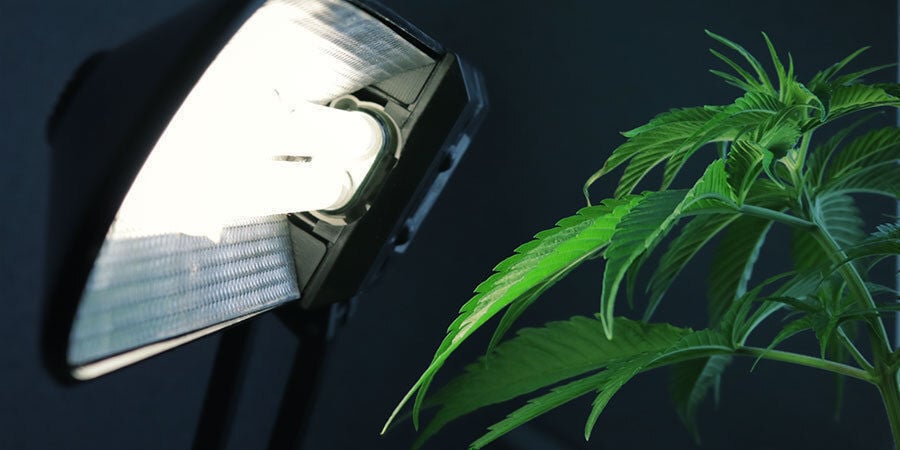
Cannabis plants have evolved to follow the patterns of the seasons, which in turn are dictated by the sun. What this means is that a savvy grower must mimic the light conditions of the relevant seasons throughout their plant’s life cycle if they are to achieve the best results.
Like most plants, cannabis tends to begin growing (vegetating) in spring, when the days are bright, clear, and long. At this time of year, there is a wide spectrum of light. However, flowering tends to begin at the end of summer and during the onset of autumn. As we all know, days are shortening and the light is dimming by this time of year, and it’s important to replicate this for your plants. To trigger the flowering phase in photoperiod cannabis plants, a 12 hours on, 12 hours off cycle is typically used.
If the incorrect type or amount of light is used during the flowering phase, this can signal disaster for your plants. You must keep your 12/12 light schedule incredibly consistent during bloom to prevent plants from reverting to vegetation or exhibiting hermaphroditic qualities.
Moreover, you need to ensure that your lights are not too overpowering for your crop, as this can cause major issues. Too little light can also be devastating, as it can result in poor flower mass and phytochemical density come harvest.
Solution: Adjust Your Lighting
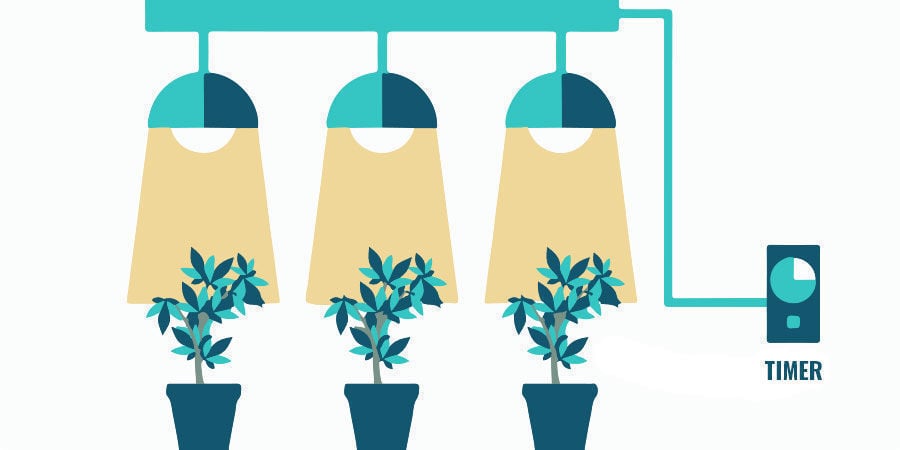
The best way to maintain a consistent 12/12 light cycle is to use a timer to automate the process. That way, you don't need to worry about forgetting to turn your lights on or off, and your plants won't be in danger.
Depending on what kind of lighting setup you have, and the relevant phase of growth, there will be optimal distances between your lights and your crop. Don't think just because the plants are flowering that they'll have stopped growing completely. If you notice any of the following signs, consider moving your lights further from your plants.
-
Praying: When leaves get excessive light, they will point upwards. Though this may look cool, it’s not a good thing.
-
Yellowing of tips and edges: The peripheries of the leaves will turn a light yellow if they begin to get bleached by the lights. Eventually, the whole leaf may turn yellow.
-
Curling: Dried-out leaves may curl at the edges.
Prevention: Use Autoflowering Seeds
In recent years, autoflowering seeds have come a long way. Pushing closer toward 30% THC, and with very respectable yields, autos are becoming the preference of many growers. Flowering according to their own internal clock, they are the (slightly) more hands-off way of growing weed. However, each strain will still require specific lighting arrangements to achieve its full potential. Still, for those who feel daunted by initiating and sustaining the bloom phase indoors, autos eliminate that issue entirely.
3. Male Cannabis Plants Pollinating Female Plants
For those who grow regular cannabis seeds, there is always the risk that the males could pollinate the females in your crop. The issue? A whole load of seeds weighing down your bud, that's what. Don’t resent these boys too much, as without them you’d have no bud at all. Although, you may not want them in your grow.
Sex begins to show in the preflowering stage. At this point, the males will begin to grow little pollen sacks where the stems of the leaves meet the main stem. There is still time until these open, however, it is best to eliminate them prior to this. The females will show little pistils in the same place. These are what will eventually grow into the flowers you so crave.
If a cannabis plant perceives itself to be in an inhospitable environment, it may display hermaphroditic qualities (characteristics of both sexes). Plants do this when they feel they are under threat, as a means to maximise survival. If your indoor grow room is hospitable and you treat your plants with adequate love, this should not occur. In the event it does, it is best to remove them as soon as they appear.
Solution: Put a Bag on Its Head
Well, not quite. To determine the sex of your cannabis plants early on, you can bag up a lower branch on each plant for 12 hours. By blocking light for 12 hours, you’ll trigger the flowering stage—for that branch only—allowing you to see what sex it is. As soon as you are able to determine it, you can stop this method and it will revert to the vegetative stage.
Prevention: Use Feminized Seeds
If you really don’t want male plants, use feminized seeds. These are engineered to develop exclusively into female plants, with up to a 99% success rate. If you don’t intend on breeding your own strains, this may be your best option.
4. Cannabis Odour Leaking From Your Tent or Grow Room
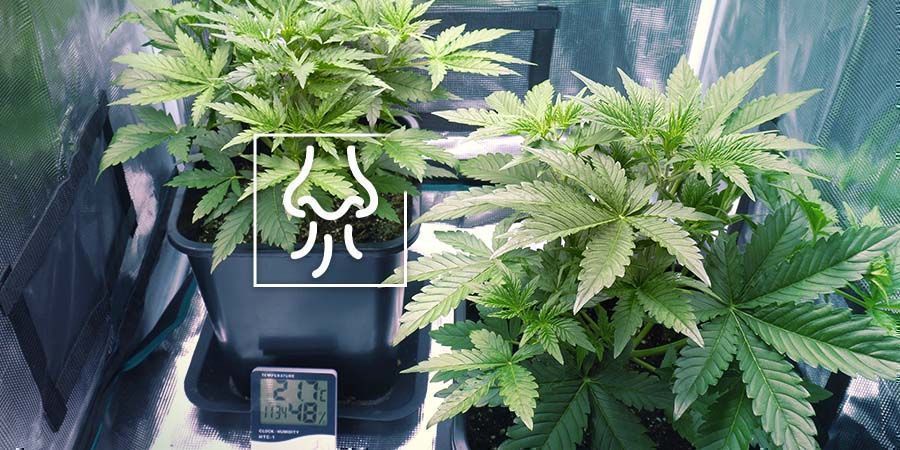
Once flowering begins is when your plants will really start to smell. Depending on your situation, and luck, the consequences of this could range from a pleasant aroma to a prison sentence or a hefty fine. Given this, it is important to take adequate steps to eliminate those odours.
Solution: Invest in Odour Elimination
By anticipating this event, you can save yourself a lot of hassle. There are a few options, ranging from the fairly inexpensive to the very high-tech, that will dampen those odours and keep you from peeping out from the curtains every five minutes.
-
Carbon Filters
The most popular method of reducing odour leakage is a carbon filter. Fitted to the end of the exhaust pipe, the activated carbon in these filters traps and eliminates smells. It is worth investing in a good one, as they will last much longer and be far more effective. It’s no good having one that packs up two weeks before your plant is ready.
-
Negative Ion Generators
Exciting name, right? Sadly, despite the sci-fi moniker, these do not turn your enemies to dust. On the bright side, though, they do eradicate smells from the air. Best placed in spaces surrounding the grow space, rather than in the grow itself, these are an effective way to cleanse the air of unwanted odours.
Prevention: Low-Odour Strains
For those only looking to grow one or two plants, a low-odour strain may be the easiest option! Though you might be looking for the dankest dank about, if you want ease and security, these might be worth a go.
5. Mould on Buds
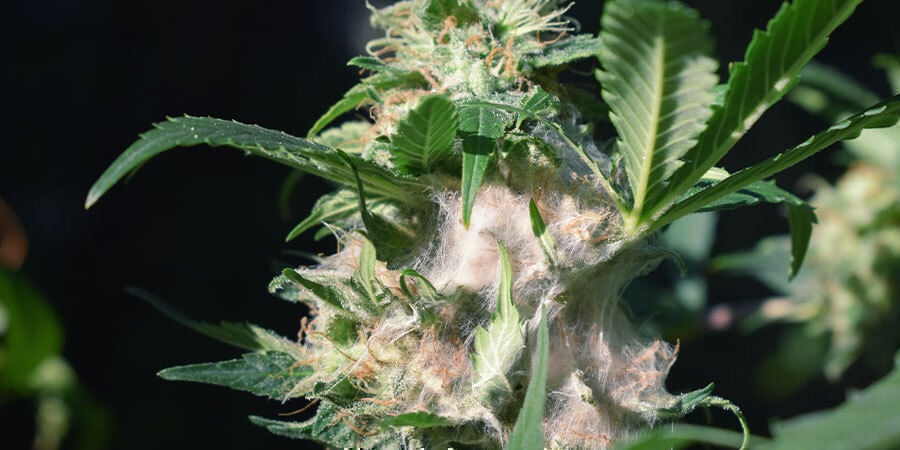
Bud rot can ruin months of effort. A fungus that develops on the buds and then travels swiftly to other ones, it can destroy a crop just before it’s ready to harvest. Fortunately, there are some simple ways to avoid it.
Solution: Cut and Isolate
Climate control is everything for minimising the risk of bud rot. Only able to take hold in cold, wet, and stagnant conditions, all you need to do is keep your grow warm and ventilated. Outdoors, this is harder, although ample airflow should not be an issue. Indoors, so long as you keep the temperature above 20°C and employ adequate ventilation, even if the spores do come into contact with your plant, they shouldn’t be able to take hold and cause problems.
But, what to do if you find bud rot already on your plant? Immediately remove any infected buds and dispose of them. This is not the time to be sentimental or greedy. If you don’t do this, it will likely spread to the rest of the plant and destroy the whole thing.
Identifiable by a white fuzz in the early stages and black spots in the latter, any plant suspected of having bud rot should be quarantined in a warm, dry environment. By doing this, you can stave off any more growth and potentially save the rest of the plant. Any other plants in the grow should be almost obsessively checked over the next few days.
Prevention: Use a Pocket Microscope
The earlier you catch bud rot, the less damage it will do. By checking over your plants using a pocket microscope, you can catch potential bud rot in its early stages. The extra expenditure can be easily compensated for by the potential yield saved.
Be Diligent To Avoid These Common Plant Problems During the Flowering Phase
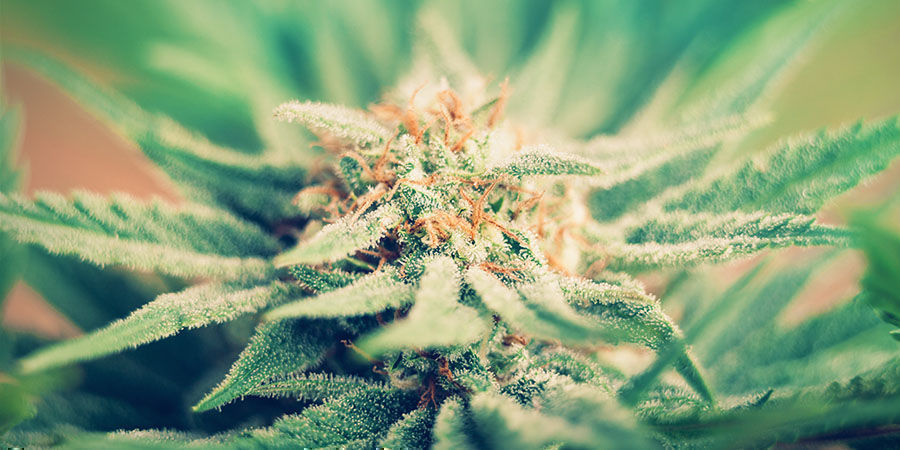
There are myriad problems you can encounter during the flowering stage of your cannabis grow. Prevention, as always, is better than a cure. The number one thing you can do for your plants is be prepared. By ensuring stable, appropriate conditions, you mitigate the likelihood of problems occurring, and make them much easier to fix if they do.
Likewise, only bite off as much as you can chew. If you don’t want to breed, buy feminized seeds. If you don’t want to worry about lighting, buy autoflowering seeds. Get yourself some low-odour seeds if a stinky grow is just going to invoke terrible anxiety for two months.
With cannabis blossoming (not literally) as it is these days, there are solutions out there that are suitable for all manner of growers and grow spaces. With a little research, you’ll be able to find the perfect combination of seeds and setup to make your next grow a success.
-
 6 min
16 October 2025
Best EC for cannabis
Getting EC right is the key to healthy cannabis plants and heavy harvests. This guide explains EC and PPM for weed in simple terms, shows the best ranges for each growth stage, and offers practical...
6 min
16 October 2025
Best EC for cannabis
Getting EC right is the key to healthy cannabis plants and heavy harvests. This guide explains EC and PPM for weed in simple terms, shows the best ranges for each growth stage, and offers practical...
-
 2 min
24 June 2024
How To Use Carbon Filters To Control The Smell Of Cannabis
A carbon filter may not look like a valuable investment on the surface, but it's an essential part of the discreet cannabis grower's arsenal—regardless of experience or setup. To find out what,...
2 min
24 June 2024
How To Use Carbon Filters To Control The Smell Of Cannabis
A carbon filter may not look like a valuable investment on the surface, but it's an essential part of the discreet cannabis grower's arsenal—regardless of experience or setup. To find out what,...
-
 4 min
14 August 2023
How To Diagnose & Treat Cannabis Nutrient Lockout
Did you know that a common cause of nutrient deficiencies in cannabis is nutrient lockout? Keep reading to learn more about nutrient lockout, why it occurs, and how to best treat it to ensure a...
4 min
14 August 2023
How To Diagnose & Treat Cannabis Nutrient Lockout
Did you know that a common cause of nutrient deficiencies in cannabis is nutrient lockout? Keep reading to learn more about nutrient lockout, why it occurs, and how to best treat it to ensure a...
-
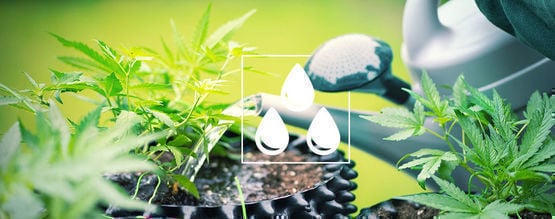 4 min
8 August 2022
Flushing Cannabis: What You Need To Know
Even if you're completely new to cannabis cultivation, you've likely heard of flushing—cutting a plant's nutrients and washing its root zone with plain water or a specialised flushing solution....
4 min
8 August 2022
Flushing Cannabis: What You Need To Know
Even if you're completely new to cannabis cultivation, you've likely heard of flushing—cutting a plant's nutrients and washing its root zone with plain water or a specialised flushing solution....
-
 5 min
12 November 2021
Spotting Male And Hermaphrodite Cannabis Plants Early
There's a lot to know when growing cannabis, and identifying the sex of your plants early, and accurately, is one of the best ways to ensure a satisfying crop. Here we'll look at males, true...
5 min
12 November 2021
Spotting Male And Hermaphrodite Cannabis Plants Early
There's a lot to know when growing cannabis, and identifying the sex of your plants early, and accurately, is one of the best ways to ensure a satisfying crop. Here we'll look at males, true...
-
 5 min
20 October 2020
The Optimal Distance Between Grow Lights And Cannabis Plants
Hanging a grow light in your grow room or tent is just one part of the story. To really get the most out of your cannabis plants, you need to hang your light at the optimal height to support robust...
5 min
20 October 2020
The Optimal Distance Between Grow Lights And Cannabis Plants
Hanging a grow light in your grow room or tent is just one part of the story. To really get the most out of your cannabis plants, you need to hang your light at the optimal height to support robust...





 United States
United States

